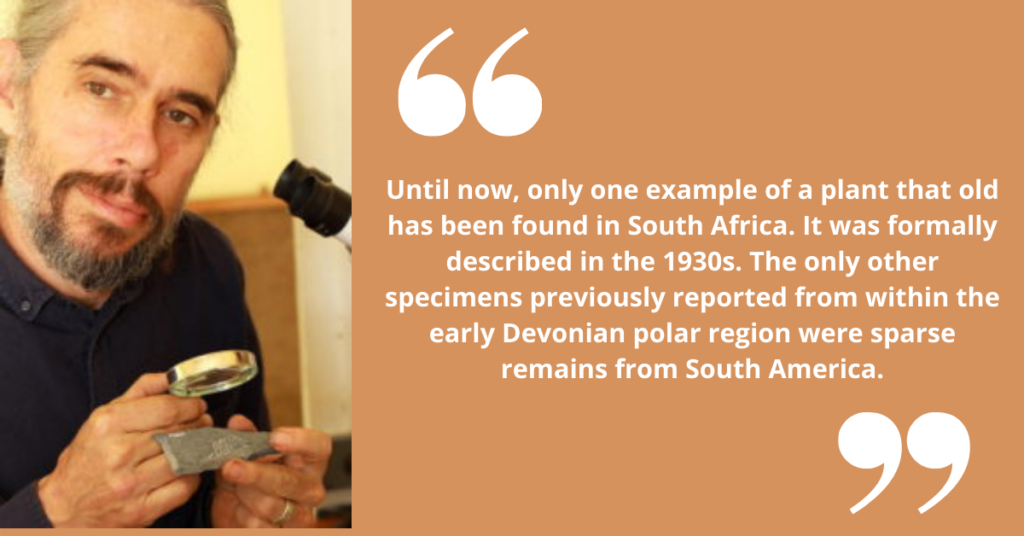Ecosystems on land changed so much during the Devonian Period that it is almost impossible to imagine. At the beginning of that period, about 420 million years ago, there were few plants on the landscape. They lived close to bodies of water and most were less than ankle high. Towards the end of the period, 60 million years later, the land was covered in a huge variety of plant life, including forests of trees.
Makhanda palaeontologist, Dr Rob Gess, has had the unique opportunity to study plants at both the beginning and end of this significant period.
He is well known to GMDirect readers for his many important discoveries in the black shale deposits of Waterloo Farm just outside Makhanda. These deposits were laid down about 360 million years ago as the Devonian Period was drawing to a close. They have included unique discoveries of lampreys, tetrapods, scorpions and numerous species of plant life that thrived in and around the estuary that existed in the area so long ago.
A few years ago he discovered a new site near Humansdorp while he was doing an environmental impact assessment for a client. He recognised shale rocks that looked like they might hold interesting fossils. After obtaining a permit he began making trips to excavate the shales and steadily assembled fossils representing one of the most diverse early Devonian flora in the world.
His discovery has been published in Scientific Reports, a Nature magazine subsidiary under the title, “An early Devonian flora from the Baviaanskloof Formation (Table Mountain Group) of South Africa”.
Rocks from the end of the Silurian and beginning of the Devonian Period contain the earliest records of plant remains. Palaeontologists have only found enigmatic plant-like spores from older rocks.
Gess said that plants at the time included probable relatives of mosses, as well as the primitive ancestors of ‘higher plants’. They did not have leaves or complex rooting systems and largely consisted of branching photosynthetic stalks topped by a variety of spore containers resembling either miniature vuvuzelas, balls, clubs or castanets.
Sites containing fossils of plants from that age are extremely rare with only about 25 previously known from around the world. Most of them came from areas that were tropical during the Devonian, and generally preserved only one or a few species. However, the sites excavated by Gess lay within the Antarctic Circle at the time they were laid down.
Until now, only one example of a plant that old has been found in South Africa. It was formally described in the 1930s. The only other specimens previously reported from within the early Devonian polar region were sparse remains from South America.
Gess and his colleague Dr Cyrille Prestianni from Belgium have identified 15 species from the site he is excavating near Humansdorp. Three of these represent genera and species formerly unknown to Science and named in his paper as: Krommia parvapila, Elandia itshoba and Mtshaelo kougaensis. Many of the plants are far more completely preserved than those normally found from this age, with a number of very small plants being exquisitely preserved. He hopes that his ongoing excavation of the sites will provide even more insights into this pivotal time period.
Paper available at: www.nature.com/articles/s41598-021-90180-z


